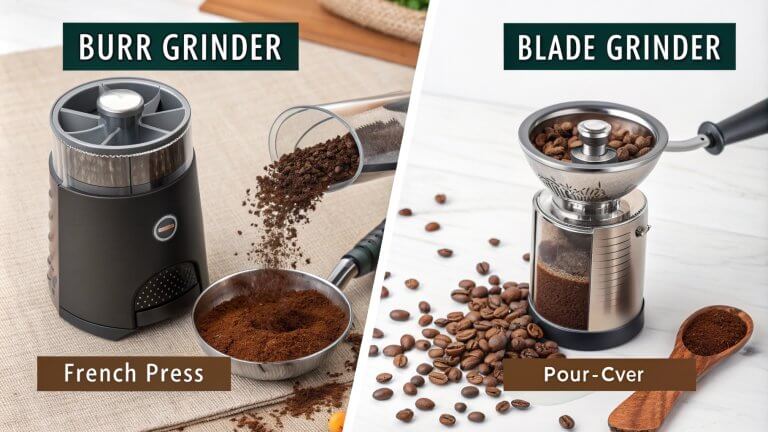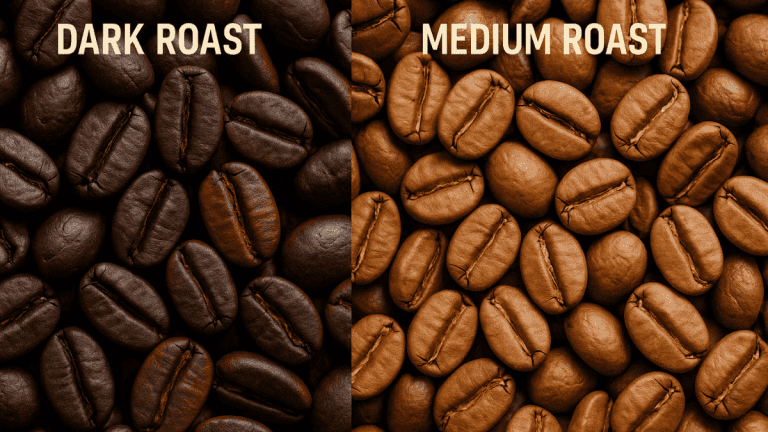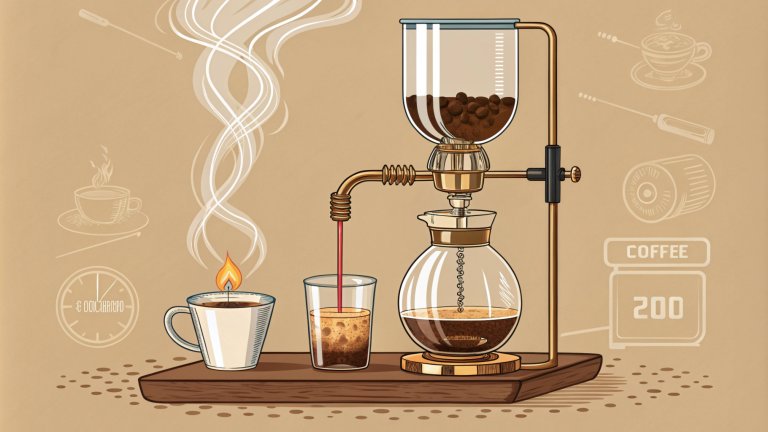
Have you ever wished you could add a whole new dimension of flavor to your everyday meals without much fuss? A brown sugar coffee rub might just do the trick. It blends the subtle sweetness of brown sugar with the bold intensity of coffee, creating a seasoning that wakes up your taste buds in the best way possible. Whether you’re preparing a quick weeknight dinner or grilling for friends, this rub can become your secret weapon in the kitchen.
So, why combine coffee and brown sugar at all? Well, think of coffee beans as little flavor powerhouses. When ground and paired with a sweetener such as brown sugar, they deliver both a smoky depth and a caramel-like undertone to savory dishes. You could say it’s a match made in culinary heaven. In this guide, you’ll learn everything you need to confidently whip up your rub, from choosing the right beans to storing the finished product for maximum freshness.
By the time you finish reading, you’ll have a go-to brown sugar coffee rub recipe that you can customize to suit your taste. You’ll also discover tips for using it on meats, veggies, and even creative new dishes. Let’s jump in and explore this flavorful blend in detail.
What is a brown sugar coffee rub?
A seasoning rub is a blend of herbs and spices that you massage onto food before cooking. Unlike a marinade, which typically involves liquid ingredients and soaking time, a rub comes together as a dry or lightly moistened mix. When we talk about a brown sugar coffee rub, we’re talking about a combination of textures and tastes that bring out the best in proteins (meat or plant-based) and vegetables.
Components and flavor profile of brown sugar coffee rub
Components in a nutshell
- Coffee grounds: Provide that roasty edge.
- Brown sugar: Delivers sweetness and helps form a caramelized crust.
- Supporting spices: Think salt, pepper, paprika, garlic powder, and other favorites that round out the flavor.
The basic principle
When you apply this mixture to the surface of your dish, the heat transforms the coffee’s bitterness into a smoky backdrop, while the sugar melts and caramelizes, sealing in juices. You end up with a great crust, which can be the deciding factor between a bland dinner and a memorable meal.
Key ingredients and their benefits
Using a brown sugar coffee rub involves a few basics that you can easily find in your pantry. Let’s break down the core ingredients and see how each one contributes to the final taste.
Coffee grounds
- Adds a subtle hint of bitterness and smokiness.
- Contains natural acids that help tenderize meats (and tofu, if you’re going plant-based).
- Creates a dark, appealing color on the crust.
Be sure to choose the right texture of coffee grounds. Finely ground coffee can sometimes result in a gritty feel, while coarsely ground beans may not provide enough surface contact. A medium grind often strikes the right balance between flavor infusion and texture.
Brown sugar
- Offers sweetness that balances coffee’s bitterness.
- Helps produce a caramelized exterior.
- Contributes a slight molasses flavor, which is deeper than white sugar.
Brown sugar, with its natural molasses content, provides an almost toffee-like sweetness. Plus, it’s known for retaining moisture, which is crucial if you don’t want your food to dry out as it cooks.
Salt and pepper
- Amplifies flavors in the rub.
- Helps create a savory balance.
Many chefs swear by salt and pepper for a reason. Salt enhances taste, pepper adds a mild heat, and both are easy to find. Make sure you use enough salt to help pull out the boldness of the coffee.
Smoked or regular paprika
- Smoked paprika boosts the rub’s smokiness.
- Regular paprika primarily offers a rich color and mild sweetness.
Extra spice blends
Feel free to add onion powder, garlic powder, cayenne, or even a dash of cinnamon. Each spice adds a uniqueness to our brown sugar coffee rub. You can tailor it to your taste or keep it simple. The beauty of a rub lies in its flexibility.
Choosing the proper coffee for your rub
Selecting coffee is half the fun if you’re a coffee lover. Even if you’re not a coffee buff, you’ll quickly notice that different roasts and coffee bean origins can significantly affect the final flavor profile.
Light roast vs. dark roast
- Light roast: Tends to have a bright, almost acidic vibrancy. Great if you prefer a sharper bite in your rub.
- Dark roast: Carries a deeper, smoky flavor. Ideal if you want a powerful warmth and mellow bitterness.
Single-origin or blend
- Single-origin: Likely more distinct flavors. The flavor could be fruity, floral, or chocolaty, depending on the region.
- Blend: Generally balanced and consistent, making it great for cooking if you don’t want unpredictable results.
In many cases, a medium to dark roast blend is a good entry point. It’s not overwhelmingly bitter but still packs enough flavor to stand out against the brown sugar. If you’re feeling adventurous, experiment with single-origin beans from places like Ethiopia or Brazil. You might be pleasantly surprised by the unique notes they bring to your brown sugar coffee rub.
Step-by-step brown sugar coffee rub recipe
Let’s get straight to the heart of the matter. Below is a straightforward recipe for a rub you can whip up in minutes. Once you nail the basics, you can tweak or scale up as needed.
Ingredients
- ¼ cup medium-ground coffee (choose a blend you like)
- ¼ cup brown sugar (packed)
- 2 tablespoons smoked paprika
- 1 tablespoon salt (kosher or sea salt)
- 2 teaspoons black pepper (freshly ground if possible)
- 1 teaspoon garlic powder
- 1 teaspoon onion powder
- ½ teaspoon cayenne pepper (optional for heat)
Instructions
- Measure your ingredients accurately. Precision ensures every bite has consistent flavor.
- In a medium bowl, combine the coffee, brown sugar, paprika, salt, pepper, garlic powder, onion powder, and cayenne if you’re feeling spicy.
- Use a spoon or whisk to mix everything thoroughly. Make sure no clumps of sugar remain.
- Transfer your rub to an airtight container. Label it with the date, so you won’t forget when you made it.
That’s it. Feel free to taste a pinch of the rub (though it’ll be pretty intense on its own). You’ll notice the slight caramel sweetness followed by a bold roastiness. This mixture is now ready to liven up your favorite foods.
How to use your rub on different dishes
One of the best things about a brown sugar coffee rub is that you’re not limited to a single type of dish. Whether you’re all about barbecue ribs or looking to spice up some roasted vegetables, a coffee rub can do wonders. Let’s explore how best to apply it.
Pork chops and ribs
- Pat the meat dry with paper towels.
- Rub a generous layer of seasoning on all sides.
- Let the meat rest for 15 to 30 minutes before cooking (longer if you have time).
- Grill, bake, or pan-sear until done, letting the sweet, savory crust form.
Beef steaks and roasts
- Reverse sear steak with the rub for a delicious outer crust.
- Slow-cook a beef roast coated in the rub to let flavors seep in.
- Combine with a bit of olive oil for a paste-like consistency if you want extra moisture.
Poultry
- Chicken wings are fantastic with coffee rub if you want a sweet-spicy twist.
- Turkey breast can also benefit, especially if you’re aiming for a smoky-sweet exterior.
- Remember to adjust cooking times so the sugar doesn’t burn under intense heat.
Seafood and fish
- Salmon fillets can get a surprising punch from a thin layer of coffee rub.
- Shrimp can also hold up to these bold flavors, especially if you grill them quickly.
Vegetables
- Rub sweet potatoes or carrots with a bit of oil for caramelized edges.
- Use it on portobello mushrooms to add depth, mimicking that earthy coffee note.
- Eggplants, zucchini, and bell peppers also work; just keep an eye on cooking time to prevent uneven charring.
The sky’s the limit. If you think coffee would pair well with your protein or produce of choice, give it a go. The key is to keep an eye on your cooking heat, so the sugar doesn’t scorch while the main ingredient remains undercooked.
Tips and variations to customize your rub
The world of seasoning rubs can be deeply personal because each of us has different flavor preferences. Here are ways you can make the brown sugar coffee rub truly your own.
Adjust the sweetness
- If you like milder sweetness, reduce the brown sugar to 2 tablespoons.
- If you want more sugary crust, add up to ⅓ cup brown sugar.
Modify the heat
- Swap out cayenne for chipotle powder for a smokier kick.
- Bump up the cayenne to a full teaspoon if you want to sweat.
- Skip spicy elements entirely for a purely sweet-and-savory rub.
Add a herby twist
- Dried rosemary or thyme adds a fragrant, earthy note.
- Italian seasoning blends can layer a fascinating herbal complexity.
Experiment with different coffees
- Flavored coffees (think hazelnut or vanilla) can be intriguing if you’re open to a bit of sweetness from the beans themselves.
- Lighter roasts brighten the overall flavor, especially if you add lemon zest or other citrus-based elements.
A single base recipe can morph into dozens of versions depending on your creativity. If you happen upon a mix you love, be sure to jot down the exact ratio so you can recreate it later.
Common mistakes to avoid
Like all good things, using a brown sugar coffee rub takes a bit of practice. The good news is that most mistakes are easy to fix. Let’s run through pitfalls you might encounter and how to sidestep them.
Mistake 1: Using overly fine coffee
Magnificent coffee grounds (like espresso grind) can leave a gritty texture on your final dish. It also makes the seasoning process feel clumpy. If that’s happening, switch to a medium grind and blend well.
Mistake 2: Skipping the resting time
Rubbing your meat or veggies and throwing them immediately onto the grill can result in uneven flavor distribution. Give the rub some time to work its magic, even if it’s just 15 minutes. That allows the salt to penetrate a bit and the sugar to begin drawing moisture from the surface.
Common mistakes infographic for brown sugar coffee rub usage
Mistake 3: Cooking at high heat for too long
Brown sugar can burn quickly under prolonged high heat. If your grill is raging hot or you’re broiling too close to the element, your rub might turn black and bitter. Keep a watchful eye or use indirect heat to avoid scorching.
Mistake 4: Going overboard on salt
Because coffee is already strong, you might be tempted to undersalt, then toss in a big pinch at the end. But the reverse approach is better: measure salt correctly from the start and taste the rub in a small batch. If you find you need more salt, sprinkle some on your dish after cooking.
Health considerations
You might wonder if there are any health concerns tied to using coffee or brown sugar in cooking. While everyone’s dietary needs differ, let’s look at some general points.
- Moderate sugar intake: Brown sugar has slightly more minerals than white sugar, but it’s still sugar. For those monitoring sugar consumption, use the rub in moderation or pair it with lean meats and plenty of vegetables.
- Caffeine content: Yes, coffee grounds contain caffeine, but the amount that ends up in your final meal is minimal. Most rub recipes call for a fraction of a cup, making overall caffeine intake negligible for most people.
- Allergies or sensitivities: Some folks might be sensitive to coffee’s acidity or certain spices. Always check with friends or family if you’re cooking for a group.
If you’re watching your dietary status closely, consider using a low-sodium salt alternative or cutting back on sugar and salt. You can always add other flavors (like herbs or chili peppers) to keep your spice mix interesting.
Storage and shelf life
You’ve gone through the effort of crafting a perfect batch of brown sugar coffee rub, so let’s talk about how to keep it fresh.
Storage tips infographic for brown sugar coffee rub preservation
Ideal storage conditions
- Airtight container: This is essential to avoid moisture and clumping.
- Cool, dark place: A pantry or cupboard away from the stove is perfect.
- Minimal exposure to air: Whenever possible, use smaller containers or resealable plastic bags to minimize oxygen exposure.
Shelf life guidelines
- Typically, a freshly made rub will stay potent for about 3 to 6 months.
- If you notice clumping, an off-smell, or a drop in potency, it’s time to make a new batch.
- For maximum flavor, make smaller batches more often.
Pro tip: Jot down the preparation date on your container. That way, you won’t lose track of when you made it. As coffee and spices both lose intensity over time, you want to maximize the rub’s flavor while it’s still fresh.
Helpful summary and closing thoughts
You’ve now mastered the basics of a brown sugar coffee rub. From gathering the right ingredients to applying them to everything from ribs to roasted veggies, you have all the essentials for a more flavorful dining experience. Plus, you’ve explored the minor tweaks and considerable variations you can try to keep your rub fresh, exciting, and perfectly tailored to your tastes.
Give it a shot in your next meal. You might rub a beautiful steak, coat a cauliflower steak if you’re keeping things plant-based, or even experiment with grilled shrimp. Don’t forget to let it rest to build that sweet, smoky crust that people remember long after dinner is done.
So, what’s next? Head to your pantry, grab that coffee, measure out the brown sugar, and whip up your rub. Then come back and let me know how it went. Cooking is all about experimenting, tasting, and having fun. And with this rub in your toolkit, you’re set to wow your family, friends, or just treat yourself to a hearty meal. Enjoy, and happy cooking!

